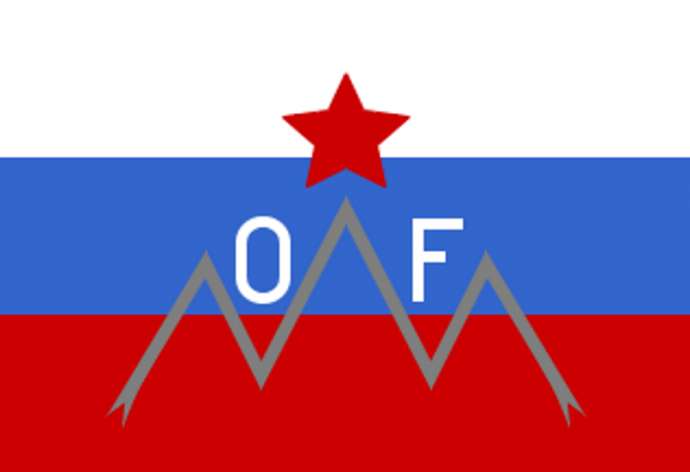STA 26 April 2019 - On the eve of Resistance Day (27 April), a ceremony will be held in Kranj on Friday to remember the Liberation Front (Osvobodilna fronta - OF), an undercover organisation which spearheaded resistance against Nazi and Fascist occupation in World War II.
Addressing the national ceremony, parliamentary Speaker Dejan Židan said resistance should nowadays be perceived as the ability to survive, as self-confidence and responsibility. He also urged for the past not to divide us but to unite us for the future.
We seem to quarrel even more about the developments in WWII than those who fought during the war, he said, expressing disappointment at attempts to revise history. He also regretted that the unity of Slovenians from 28 years ago when Slovenia became independent had gradually faded away.
Židan sees independence, "which was achieved with a collective decision of the Slovenian nation for independence, with Territorial Defence's military courage, the determination of the police force, diplomatic achievements and the boldness of the media, as the latest historical test of Slovenian resistance".
For Slovenians, World War II started on 6 April 1941, when Germany attacked Yugoslavia; just three days later, Yugoslav soldiers, who put on only weak resistance, left Slovenia or were captured.
The territory of present-day Slovenia was divided between Germany, Italy and Hungary, with a small portion of land near Brežice in the east coming under the Independent State of Croatia, a Nazi puppet state.
With the exception of members of the German-speaking and Hungarian minorities, the majority of the Slovenian population could not reconcile themselves to the occupation.
As historians Zdenko Čepič and Damijan Guštin put it in their book Images of Lives of Slovenians in WWII, it was only a matter of time when and how they would resist.
The Anti-Imperialist Front, as it was initially known, was formed in Ljubljana on 26 April 1941, the day when Hitler visited Maribor, or two weeks after occupation and ten days after the Yugoslav authorities in Belgrade surrendered.
The movement was founded at the home of intellectual Josip Vidmar (1895-1992) by representatives of the Communist Party of Slovenia, the Sokoli gymnastic society, the Christian Socialists and a group of intellectuals.
It featured no political party from the pre-war period, but fractions of these parties from across the political spectrum as well as political dissidents, resulting in a mixture of worldviews.
Nevertheless, the leading role was all along played by Communists, even if there were only some 1,000 members. Having spent 20 years working undercover as an illegal organisation was what made them best suited to work in an occupied territory.
Yet there was infighting for Liberation Front leadership as early as 1942, including a clash between the Communists and Christian Socialists, which resulted in the Dolomite Declaration.
In the March 1943 declaration, the founding groups agreed to the domination of the Communist Party, a watershed moment which signalled the end of political pluralism.
The Liberation Front spread its network around the country regardless of the borders set up by the occupying forces. According to Čepič and Guštin, it was a kind of a state within the state, at least in Ljubljana in the first year.
To protect the Liberation Front and its leadership, the Security and Intelligence Service (VOS) was established upon the Communist Party's initiative.
Apart from VOS, the National Protection service was organised as a military organisation with small units operating around the country and at factories.
The Slovenian Communists were tasked to organise an armed resistance by the Yugoslav Communist Party's politburo and started organising it past the Liberation Front.
Thus, they set up military committees to lead the armed resistance on 1 June 1941 and the command of Slovenian partisan corps on the day of Germany's attack on the Soviet Union.
Čepič and Guštin say that left radicalism and sectarianism on the part of some Communists caused frictions within the Liberation Front, which its leadership and the Communist Party fought strongly against.
There were also problems in executing "the people's power" as individual partisan commanders terrorised the population, resorted to torture and even executions.
And even if the Communists had clearly stated their goal of pursuing political change after the war, people were willing to support the Front and cooperate with it.
Čepič and Guštin cite a statement by the leader of the Slovenian People's Party's illegal military organisation during WWII, Rudolf Smersu, who said "people simply flocked to them!"
This was despite warnings by Slovenian politicians that the Liberation Front was but an extension of the Communists.
And views on the Liberation Front and on Resistance Day, which used to be termed Liberation Front Day until renamed in the early 1990s, still differ.
But historians say that instead of engaging in basic studies there is too much focus on the role of the Liberation Front, which leads to rather general and biased views.
On Saturday, a series of local events will be organised around Slovenia, including memorial walks, and the Presidential Palace will open its door to visitors.
All our stories on World War 2 can be found here







